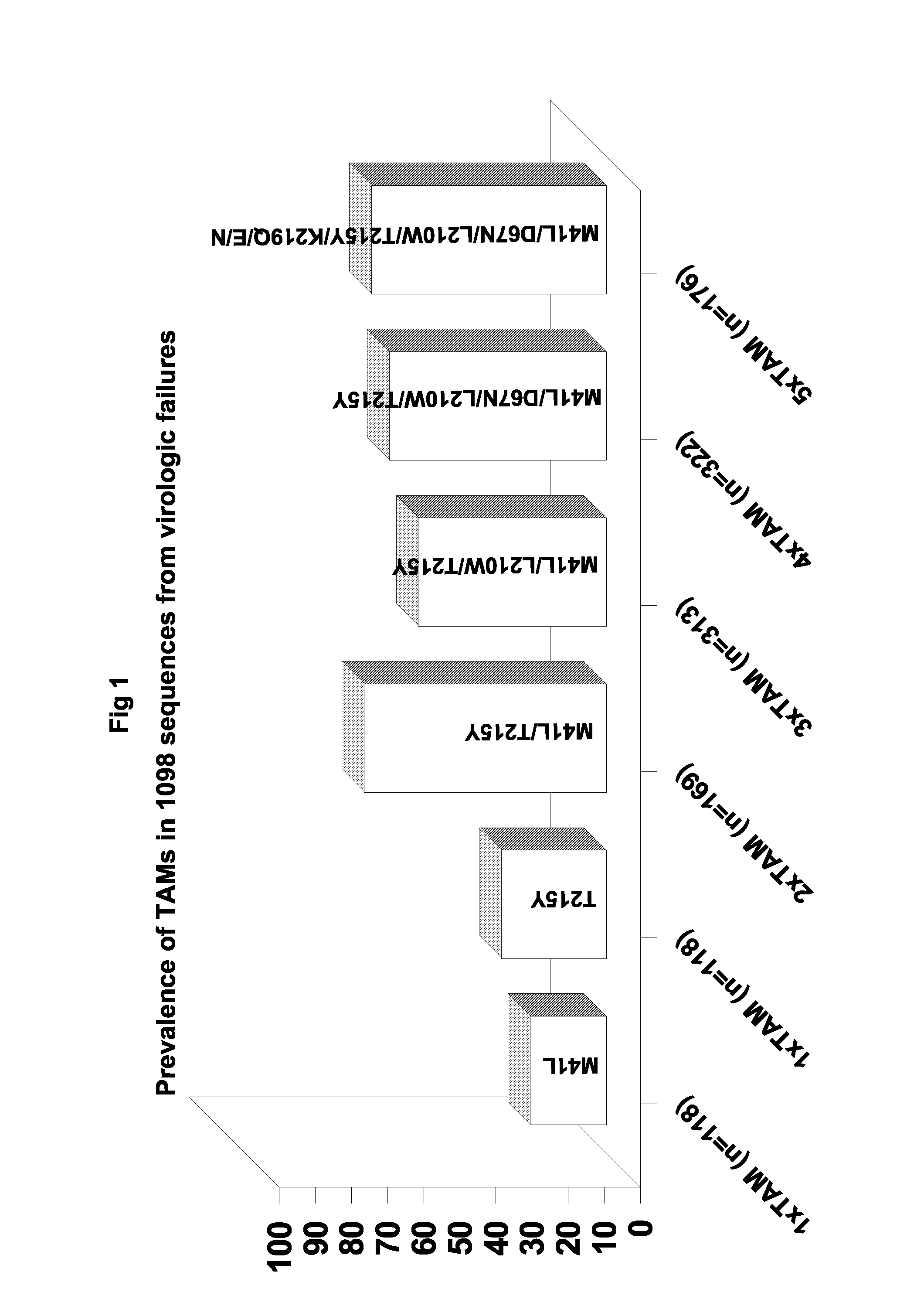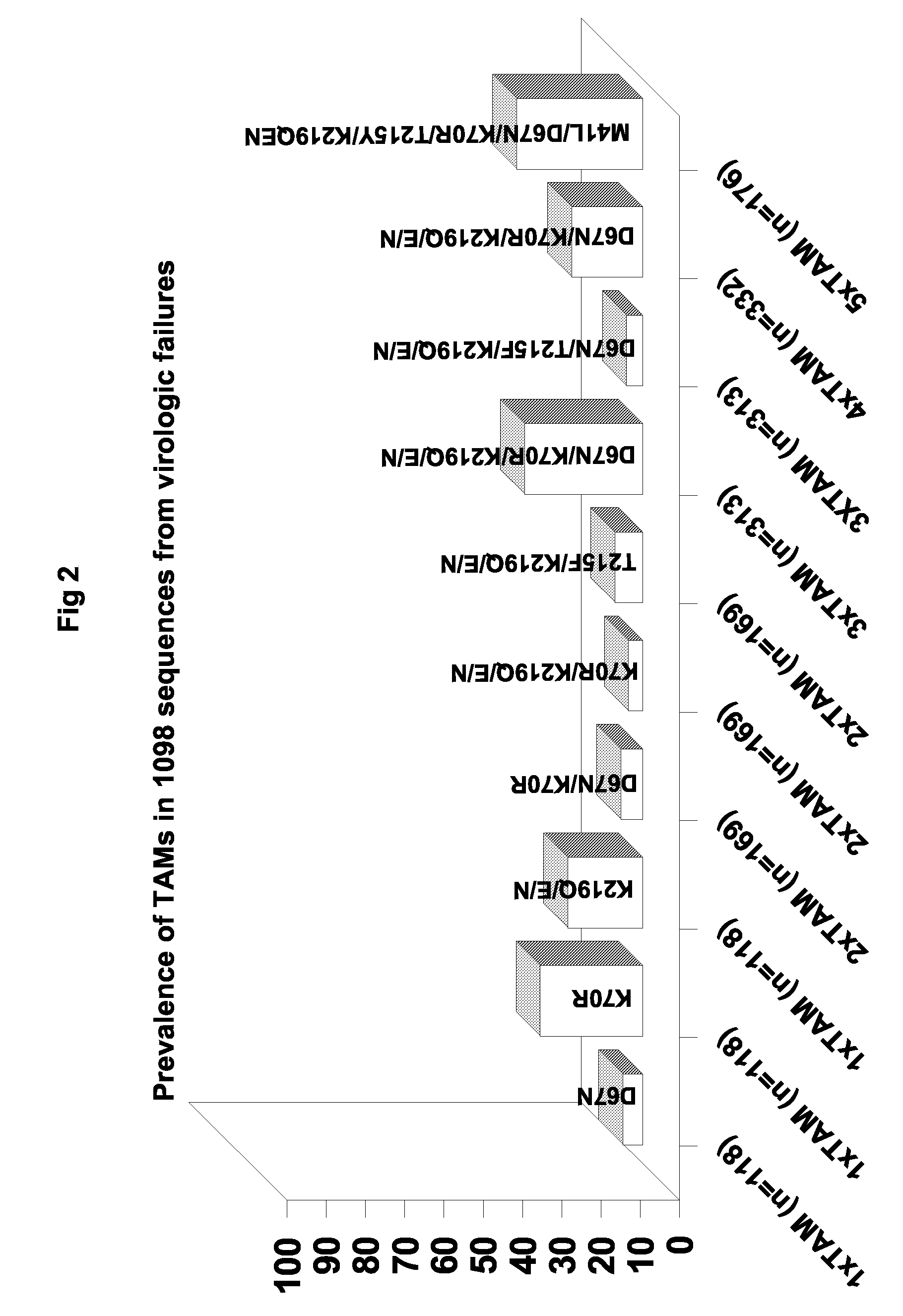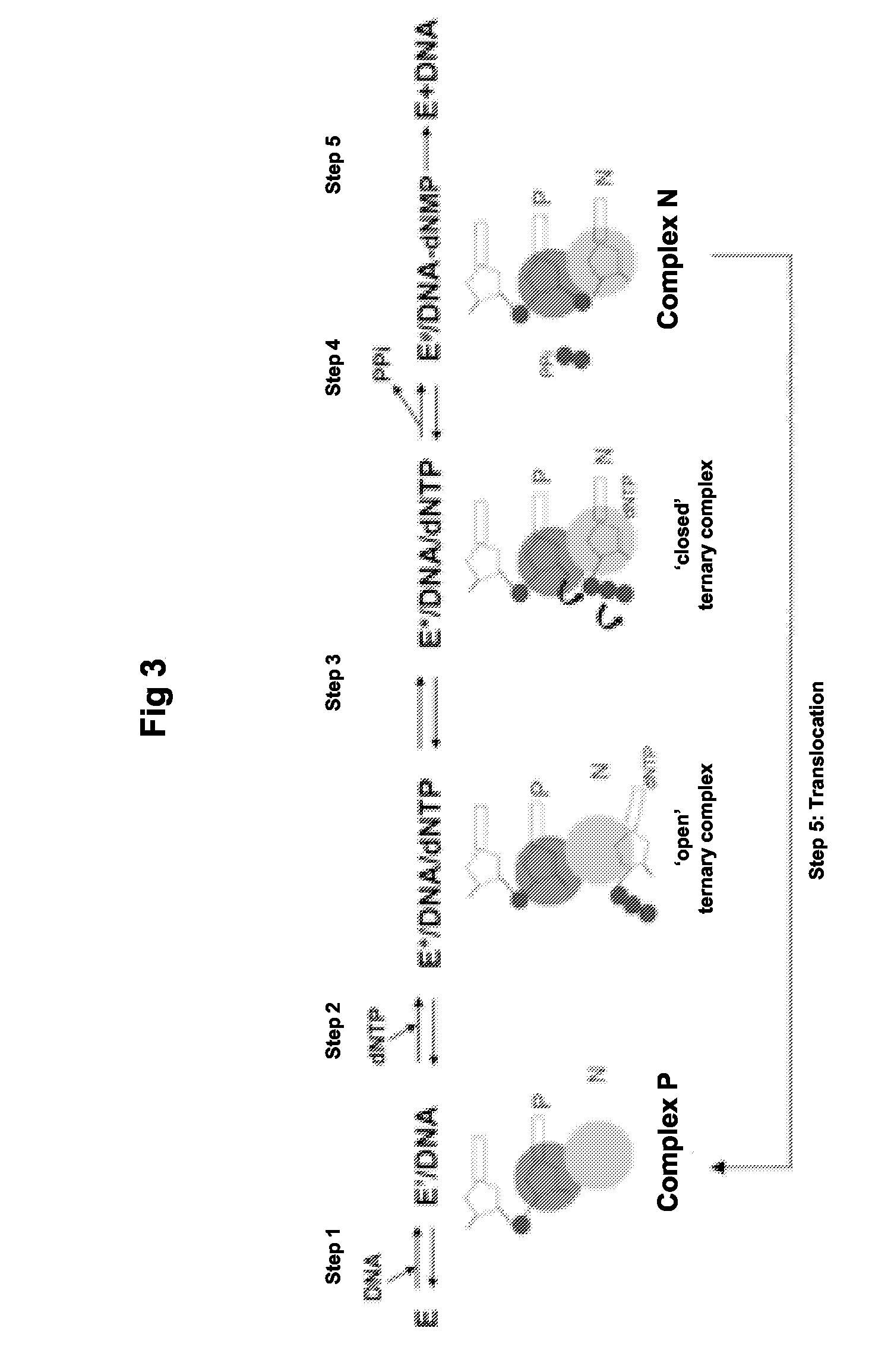Compounds useful in the treatment of HIV
a technology of immunodeficiency virus and compound, which is applied in the field of compound useful in the treatment of hiv, can solve the problems of inability to eradicate hiv from patients, inability to produce resistance phenotype, and dramatic limitation of the effective administration period of a particular hiv drug for a given patient, so as to enhance the risk of “readthrough” and improve the effect of antiviral efficacy
- Summary
- Abstract
- Description
- Claims
- Application Information
AI Technical Summary
Benefits of technology
Problems solved by technology
Method used
Image
Examples
example 1
Activity of 2′,3′-dideoxy-3-C-hydroxymethyl-cytosine against TAM primer rescue-related resistant HIV in the PhenoSense HIV assay
[0208]The susceptibility of 2′,3′-dideoxy-3′-C-hydroxymethyl-cytosine on HIV-1 isolates from patient plasma samples that bear typical TAM primer rescue mutant resistant genotypes is determined by the commercially available PhenoSense HIV assay (described in Petropoulos, C J et al., (2000) Antimicrob. Agents Chemother. 44:920-928 and performed by ViroLogics, Inc). The assay is performed by amplifying the protease (PR)-RT segment of the HIV pol gene from patient plasma and inserting the amplification products into a modified HIV-1 vector derived from an NL4-3 molecular clone.
[0209]Viral stocks are prepared by co-transfecting 293 cell cultures with recombinant viral DNA vector and an expression vector that produces the amphotropic murine leukemia virus envelope proteins. Pseudotyped virus particles are harvested from the transfected cell cultures and are used ...
example 1a
[0210]Table 1 summarizes a main cluster of primer-rescue-related TAM mutants used in the experiment are resistant to HIV and bear the characteristic TAM genotype that typically emerges during AZT-involved antiretroviral therapy.
[0211]
TABLE 1Characteristic genotype in primer rescue-relatedTAM patient isolates 20 and 21IsolatenumberCharacteristic primer rescue-related TAM mutations20M41L, D67N, K70R, V118I, L210W, R211K, T215F, K219Qand L228H21M41L, D67N, K70S, V118I, L210W, R211K, T215Y, K219Nand L228H
[0212]Results are depicted in FIG. 5. Wild-type HIV virus is used as the reference. Here, the inhibition of the patient isolate 20 and 21 strains is expressed as the fold change in reduction of susceptibility to the treatment drug as compared to parallel runs of the reference. The following antiviral drugs were tested: AZT, 3TC, TNF, ABC, d4T, FTC and the compound of the invention. It is clearly apparent that the invention's 2′,3′-dideoxy-3′-C-hydroxymethylcytidine retained activity aga...
example 1b
[0214]Table 2 outlines a primer rescue-related mutant HIV with the genetic background M184V (a discriminative mutant), which is typically selected by the very commonly employed antiretroviral therapy AZT+3TC (Combivir).
[0215]
TABLE 2Genotypic changes in TAM- primerrescue-related patient isolate 19IsolatenumberCharacteristic primer rescue-related TAM mutations19M41L, D67N, K70R, V118I, M184V, L210W, T215F, K219Eand L228H
[0216]As shown in FIG. 6, 2′,3′-dideoxy-3′-C-hydroxymethylcytidine once again retained activity against this resistant virus, showing only a 1.78-fold difference in susceptibility compared to wild type HIV. Both 3TC and AZT lost activity and showed reducted potency (i.e. a pronounced reduction in viral susceptibility) to the resistance virus (FIG. 6).
PUM
| Property | Measurement | Unit |
|---|---|---|
| time period | aaaaa | aaaaa |
| pH | aaaaa | aaaaa |
| concentration | aaaaa | aaaaa |
Abstract
Description
Claims
Application Information
 Login to View More
Login to View More - R&D
- Intellectual Property
- Life Sciences
- Materials
- Tech Scout
- Unparalleled Data Quality
- Higher Quality Content
- 60% Fewer Hallucinations
Browse by: Latest US Patents, China's latest patents, Technical Efficacy Thesaurus, Application Domain, Technology Topic, Popular Technical Reports.
© 2025 PatSnap. All rights reserved.Legal|Privacy policy|Modern Slavery Act Transparency Statement|Sitemap|About US| Contact US: help@patsnap.com



